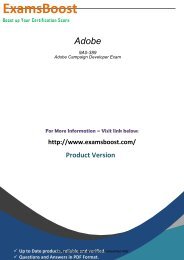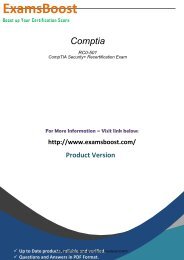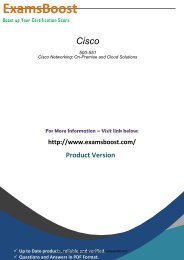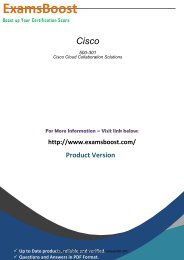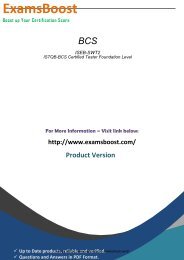200-125 Exam Practice Software 2018
Study kits and preparation materials provided by us for 200-125 Test are authorized by the professionals and industry experts. You can easily pass your certification test with our brain dumps and PDF sample questions. For more info please visit here: http://www.examsboost.com/test/200-125/
Study kits and preparation materials provided by us for 200-125 Test are authorized by the professionals and industry experts. You can easily pass your certification test with our brain dumps and PDF sample questions. For more info please visit here: http://www.examsboost.com/test/200-125/
You also want an ePaper? Increase the reach of your titles
YUMPU automatically turns print PDFs into web optimized ePapers that Google loves.
4. Build the new MAC header and forward the packet. Finally, the router builds a new MAC header for<br />
the packet. The MAC header includes the router's MAC address and the final destination's MAC address<br />
or the MAC address of the next router in the path.<br />
Question: 12<br />
Refer to the exhibit.<br />
What two results would occur if the hub were to be replaced with a switch that is configured with one<br />
Ethernet VLAN? (Choose two.)<br />
A. The number of collision domains would remain the same.<br />
B. The number of collision domains would decrease.<br />
C. The number of collision domains would increase.<br />
D. The number of broadcast domains would remain the same.<br />
E. The number of broadcast domains would decrease.<br />
F. The number of broadcast domains would increase.<br />
Answer: C, D<br />
Explanation:<br />
Basically, a collision domain is a network segment that allows normal network traffic to flow back and<br />
forth. In the old days of hubs, this meant you had a lot of collisions, and the old CSMA/CD would be<br />
working overtime to try to get those packets re-sent every time there was a collision on the wire (since<br />
Ethernet allows only one host to be transmitting at once without there being a traffic jam). With<br />
switches, you break up collision domains by switching packets bound for other collision domains. These<br />
days, since we mostly use switches to connect computers to the network, you generally have one<br />
collision domain to a PC.<br />
Broadcast domains are exactly what they imply: they are network segments that allow broadcasts to be<br />
sent across them. Since switches and bridges allow for broadcast traffic to go unswitched, broadcasts<br />
can traverse collision domains freely. Routers, however, don't allow broadcasts through by default, so<br />
when a broadcast hits a router (or the perimeter of a VLAN), it doesn't get forwarded. The simple way to<br />
look at it is this way: switches break up collision domains, while routers (and VLANs) break up collision<br />
domains and broadcast domains. Also, a broadcast domain can contain multiple collision domains, but a<br />
collision domain can never have more than one broadcast domain associated with it.<br />
Visit us athttps://www.certsgrade.com/pdf/<strong>200</strong>-<strong>125</strong>/


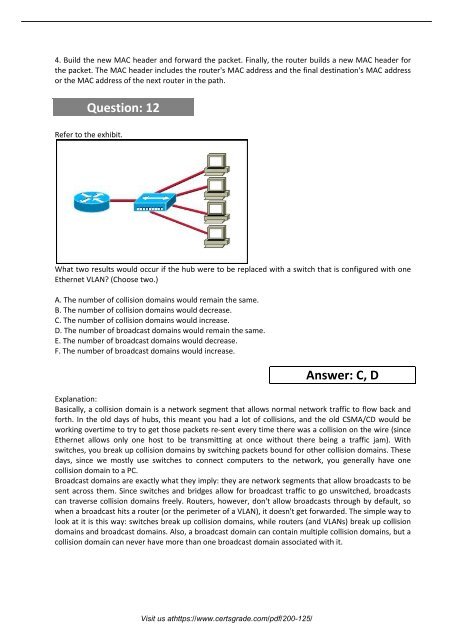
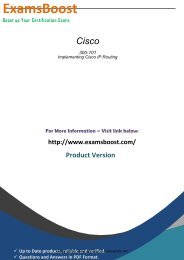
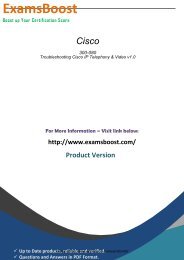
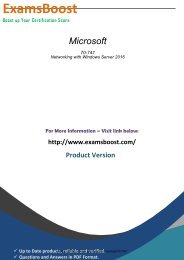
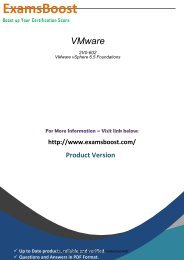
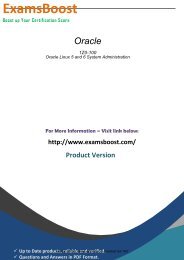

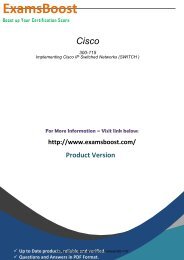
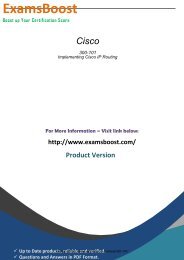
![Cisco 300-075 [2018] Updated 300-075 Dumps PDF by ExamsBoost](https://img.yumpu.com/59900470/1/184x260/cisco-300-075-2018-updated-300-075-dumps-pdf-by-examsboost.jpg?quality=85)
